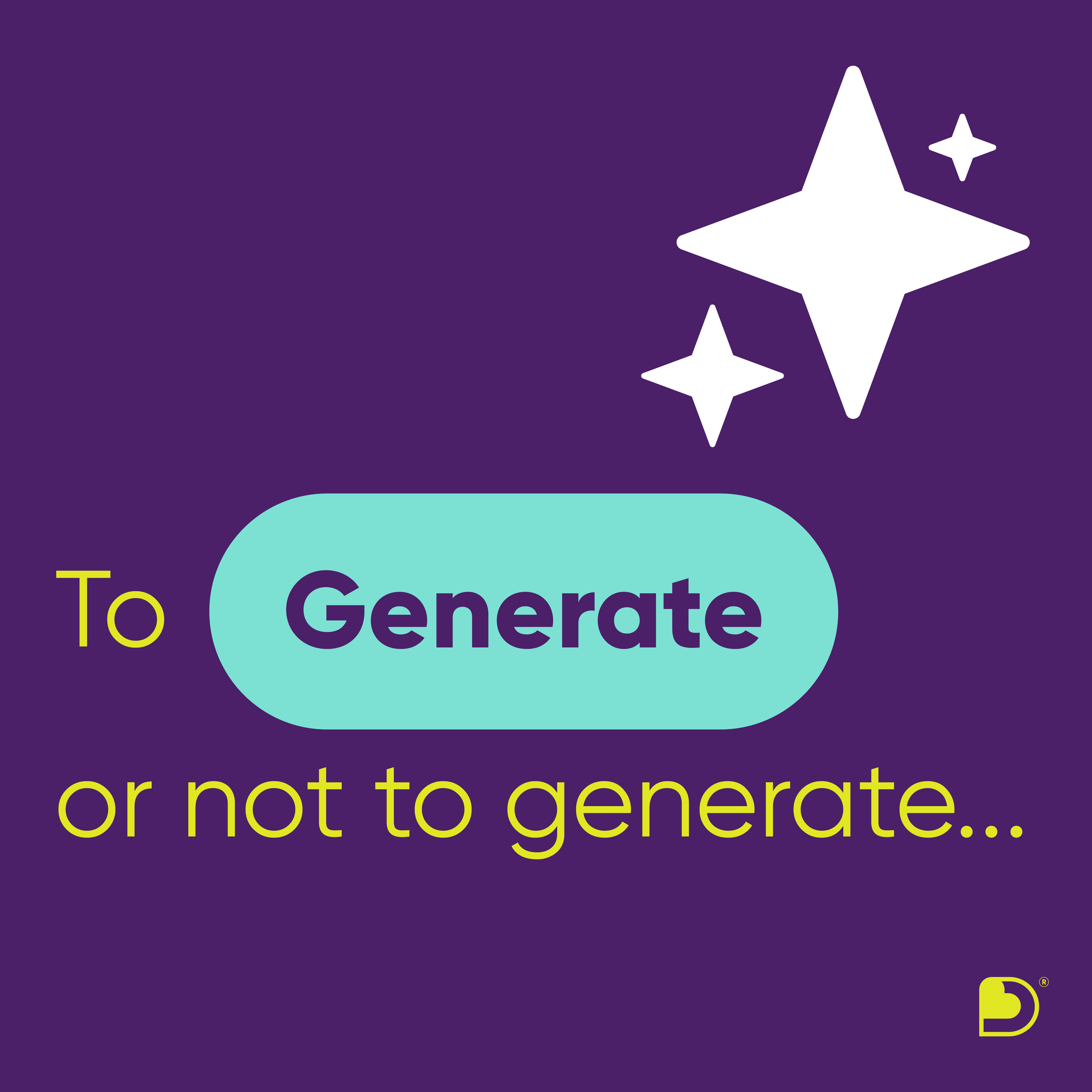To generate or not to generate, that is the question
It’s a divisive topic – and rightly so. The creative talent once exclusive to photographers, graphic artists, and illustrators is now in the hands of algorithms – offering infinite possibilities. But, as with many things that are seemingly simple on the surface… are far from it.
As we navigate the next chapter in generative image creation, we asked ourselves a few fundamental questions:
- Does it support, enhance, and link to your creative concept?
- Does it support the client’s brand values?
- Are images generated via a reputable platform that cares about supporting creative talent and artistic integrity?
- Is it practical solution e.g. AI generated images are fantastic for a campaign, but are they suitable for an extensive library?
Taking stock
The use of imagery has always been a critical visual differentiator for any brand, whether it’s royalty-free, rights-managed, CGI or bespoke. It comes down to budget, timing, and usage. Royalty-free imagery is fast, efficient, and accessible, by anyone. Which means, you can see the same image often popping up on different sites.
However, generative imagery gives us more control. A proprietary edge.
Prompts make perfect
Whether you’re searching for images via a global image library, or creating tailored prompts via a generative AI platform, the same rules apply; the concept, composition, style, meaning, purpose, and art direction that underpins an image, should always come from an original source, the brief. The platforms can create, but they still need the idea. It’s all about the quality of the prompts, and that comes down to the concept and what you’re trying to achieve. It’s trial and error, believe me.
As a hands-on designer, I know all too well the feeling of that elusive search for the ‘right image to complete the set’ challenge. With generative ai imagery, the style/suite of images you want to achieve, you can create an entire library – now that is liberating!
Ultimately, it’s not about whether we can generate AI imagery – but how we ensure brand authenticity and relevancy to the brief. We all know how Jurassic Park turned out – powerful innovation, but not without consequences.
Emma Overeem, Creative Director, Living London.
Connect with one of our experts
If you'd like to discuss how we can help develop your brand using AI, please contact Duncan Shaw in New York, Greg Hobden in London or Gigi Yung in Hong Kong.

Related insights
Our latest insights, directly to your inbox




